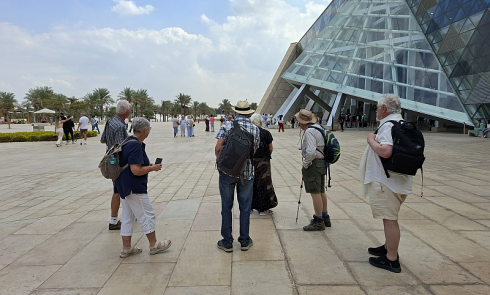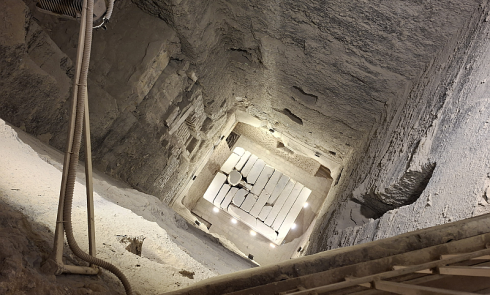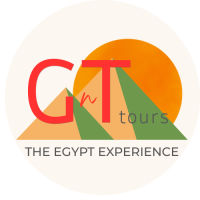An early breakfast and then all in the minibus as we start our first day of West Bank exploration, begining in the south of the necropolis with the Valley of the Queens. Although there are over a hundred tombs in the Valley of the Queens and its side wadis, there are only three that are actually open for viewing. There used to be four, but sadly the tomb of Nefertari is still closed. We live in hope. A good reason to come back!
We started in the tomb of Khaemwaset, a son of Rameses III. Nice to see the response to actually being in a royal tomb, especially given the difference between the New Kingdom tomb decoration and that of the Old Kingdom that we had witnessed at Saqqara. One of the topics of conversation from our previous days had been the Sons of Horus, so it was good to be able to see them depicted in the tomb, in context, as it were. After the young prince, we moved on to the tomb of Queen Titi. It is assumed because of the style of the tomb that she was a wife of Rameses III and that the princes buried either side of her were her sons, but that is still open to discussion. Our third tomb was another prince, another son of Rameses III, Amunherkheshef. Again, a beautifully decorated tomb.
Our driver was waiting for us in the parking area, and we were whisked around the hillside to our next destination, the village of Deir el-Medina, the Place of Truth. From royalty to the people who actually worked on the tomb, building, painting, plastering and so on is quite a jump, however, these were no ordinary workmen but master craftsmen, and their tombs show that. Because the tombs are quite small, it was deemed best to split up and do a variety of tombs in twos and threes. With the large number of tourists there was often quite a wait between tombs, however, having the Luxor Pass has its advantages and often the tomb guardians give the passes preference over normal ticket holders. Deir el-Medina was no exception, and we got ushered into tombs while others had to wait. After our fill of tombs, we headed up through the village to the site of the Ptolemaic temple. Having explained the “weighing of the heart” ritual at the Mummification Museum the day before, it was now a good opportunity to show it, in situ, as it were.
Next stop, Medinet Habu, but before that a visit to a local friend and his shop, where we were treated to the remarkable Egyptian hospitality as our host made shay for everybody. I have written elsewhere about this man and his incredible offers of kindness during our Covid “stay”, and it was good to see him again. I think for most of the group this was their first taste of interacting with the local population, listening to his stories about Luxor in the two years since I saw him last. One of the team had been looking for a gift for a family member and while we drank tea, he found what he was looking for. Everybody happy!
Wishing our friend all the best for the future, we made our way out of his shop and down the road to our lunchtime venue. Again, the reception from the owners on our arrival was wonderful, as, I hasten to add, was the food. I have to admit to not recognizing the owner immediately as he has grown a wild beard since I was last at his establishment, but good to see him and his daughter once more. It is indeed hugely rewarding to see Egypt first-timers tucking into local cuisine with such relish. Lunch finally finished, we crossed the road to today’s final destination.
Medinet Habu, the mortuary temple of Rameses the Third, and also site of the Harem Conspiracy. This a really impressive building and I still don’t understand why it is not featured more on tour group’s itineraries. The remarkable colours on the pillars and ceilings of Medinet Habu were great talking points and we spent a good while walking around marveling at the paintwork. We paused for a moment to see the piles of severed hands, and other body parts, a practice used by the troops to prove the numbers of slain enemies. There really is so much to look at here. Lastly, we ventured outside the main temple to take in the vast northern wall that depicts the battle against the Sea People. What a fantastic place this is, although the experience was slightly marred by the number of young, certainly inappropriately dressed, tourists who obviously cared nothing for what they were looking at but were more concerned about shots for social media. OK right!
















